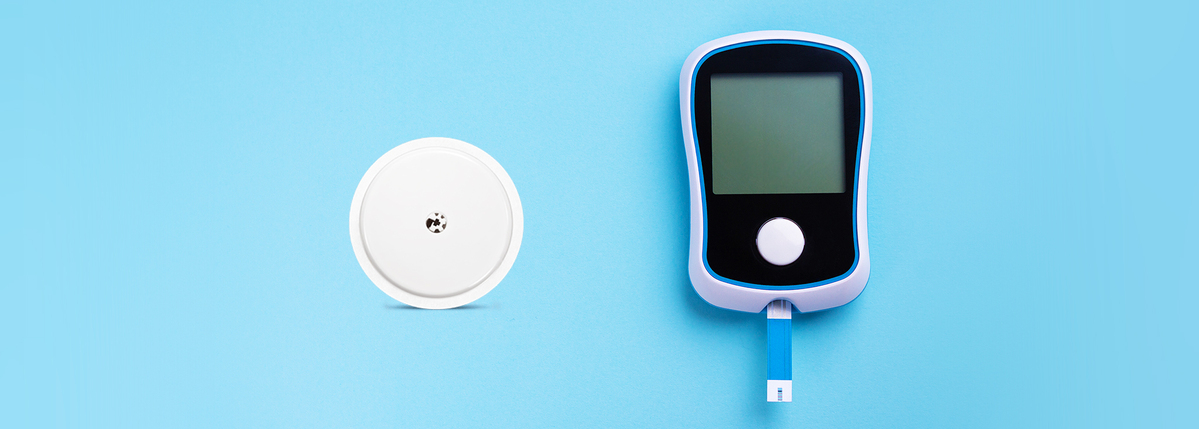Checking Your Blood Sugar: Picking the Right Method
A big part of diabetes management is checking your blood sugar levels every day. You can’t know if you’re reaching your diabetes goals if you aren’t checking your blood sugar levels regularly, right? Nowadays, there are a lot of options. This guide can help you decide which is the right technology choice for you!
Why you should check your blood sugar levels
It might seem like a tedious task—because it is—but checking your blood sugar levels can reduce your risk of developing diabetes complications. Your blood sugar levels also let your health care team know if your medication dosages need fine-tuning or if you need to try a new medication.
Your blood sugar level also tells you more than just a number.
Checking your blood sugar can potentially tell you if you’re:
- Sick: Higher than normal blood sugar levels can be an indicator that your body may be fighting an infection.
- Dehydrated: Dehydration can cause your blood sugar levels to be higher than usual.
- Stressed: No surprise that when stress hormones are high your blood sugar levels can also be higher.
- On the right med: When trying new medication, checking your blood sugar levels can help you know how well it’s working for you.
Checking your blood sugar levels is a great tool for better understanding your body and how it responds to everyday parts of life (food, medications, exercise, etc.) or other factors (stress, illness, etc.). Talk with your doctor about how often you should be checking your blood sugar levels.
Ways to check your blood sugar levels
Thankfully, checking blood sugar levels has come a long way since tasting urine! The two most common ways of checking your blood sugar levels are with a blood glucose meter (BGM) or continuous glucose monitor (CGM).
Let’s compare these two types of technology!
Blood glucose meters (BGM)
- Includes a meter, lancet and test strips
- Measures blood sugar level at that moment (a single reading)
- Requires a blood draw every time
- Available by prescription or over-the-counter (OTC)
- Price range: $0-$30 (depending on insurance or OTC)
- Several brands available
- Can pair with diabetes management platforms (desktop/mobile apps)
- Can fit in a purse/backpack
PRO: Easily accessible, affordable even without a prescription
CON: Test strips are tiny and can be hard to use for anyone with larger hands or carpal tunnel, extra supplies to carry around, requires finger prick
Continuous glucose monitors (CGM)
- Includes a sensor inserted in body fat tissue, transmitter, handheld reader or mobile app
- Measures blood sugar levels continuously (several readings over time)
- Requires one-time insertion under the skin (or via doctor for implantation)
- Includes arrows indicating blood sugar direction and customizable alerts for high and low blood sugar levels
- Only available by prescription
- Price range: $0-$500+
- Several brands available
- Can pair with diabetes management platforms (desktop/mobile apps)
- Small, water-proof wearable device (only handheld reader or smartphone carried)
PRO: Real-time data collected, indicates whether blood sugar is rising or falling quickly at any moment, includes alerts for high and low blood sugars, wearable device, can pair with smartphone, no finger pricks, trial programs available like Hello, Dexcom and MyFreeStyle Program.
CON: Not easily accessible due to insurance requirements/limitations, not easily affordable, may cause adhesive allergies, must be worn 24/7
Picking the right method
Both BGMs and CGMs have their benefits. If both are options available to you, here are some things to consider:
- Which works best for my lifestyle/activity level (sports, exercise, etc.)?
- Do I have any manual limitations to using one over the other (carpal tunnel, adhesive allergies, etc.)?
- Which can I afford/does my insurance cover?
- Which will make my diabetes routine more manageable?
- How often do I actually need to check my blood sugar? (Ask your doctor!)
The point of using either a BGM or CGM is to help you collect the diabetes data you need to make informed decisions about your treatment plan. The best way to find out which is better? Give it a try. If one doesn’t seem to work for your daily routine, you can always talk to your provider about switching to a different method.
Editor’s Note: Educational content related to continuous glucose monitors is made possible with support from Abbott, an active partner of Beyond Type 1 at the time of publication. Editorial control rests solely on Beyond Type 1.





